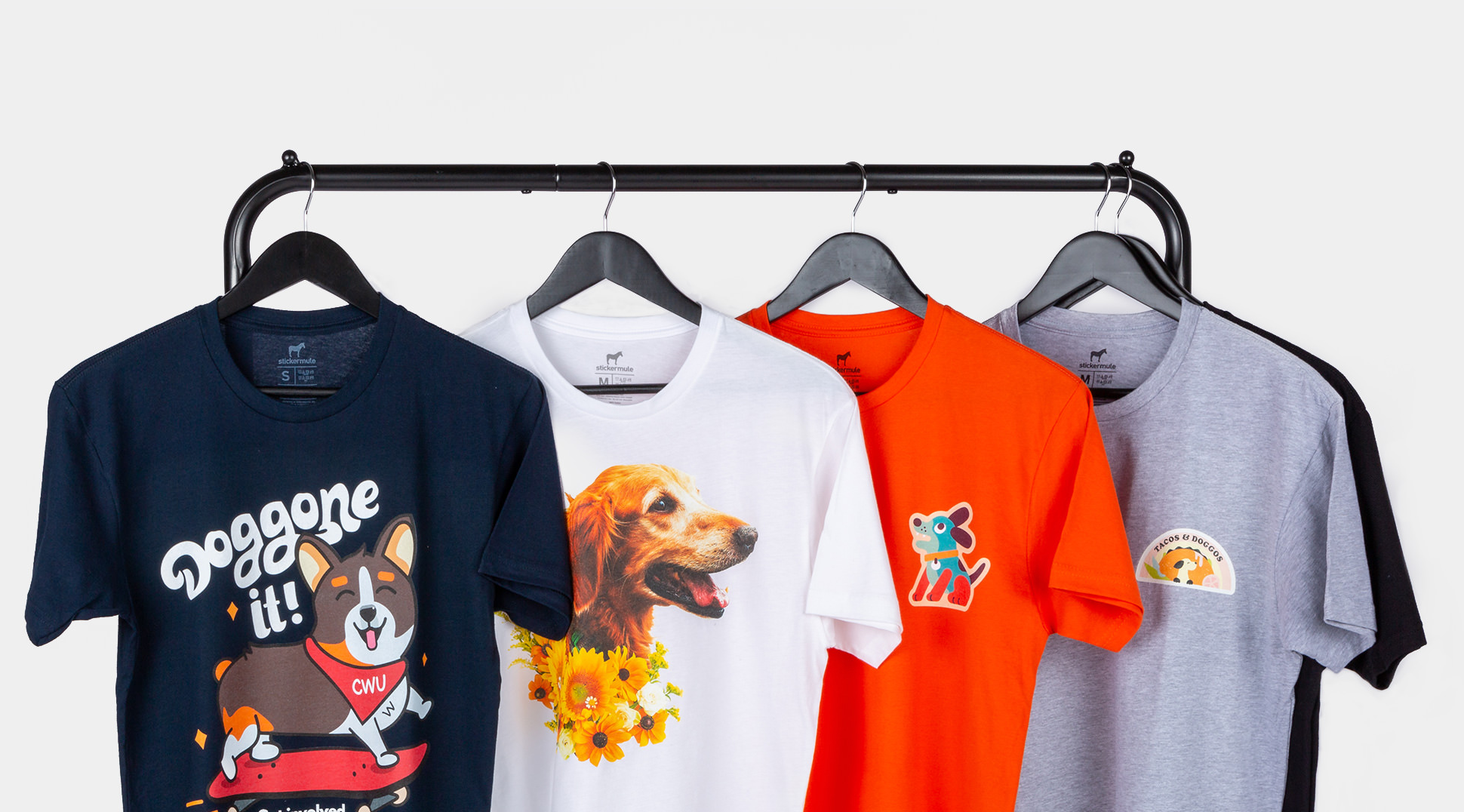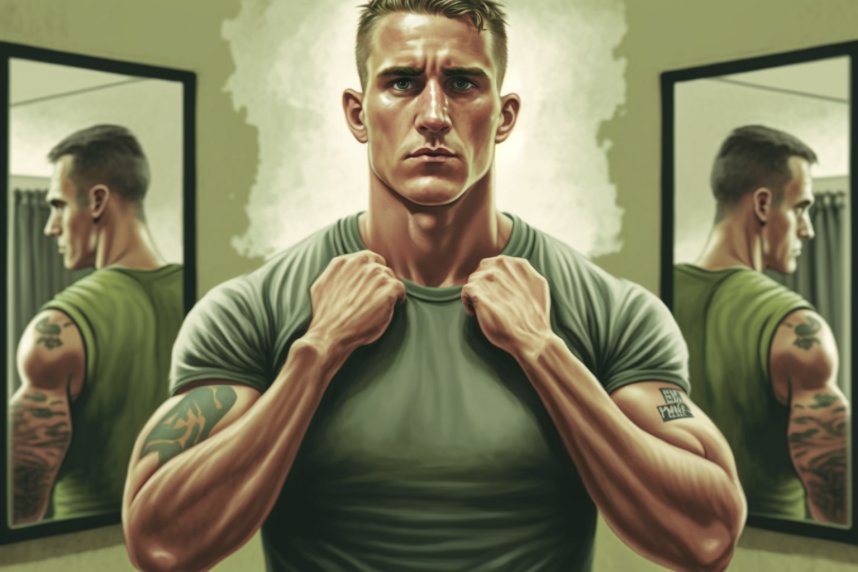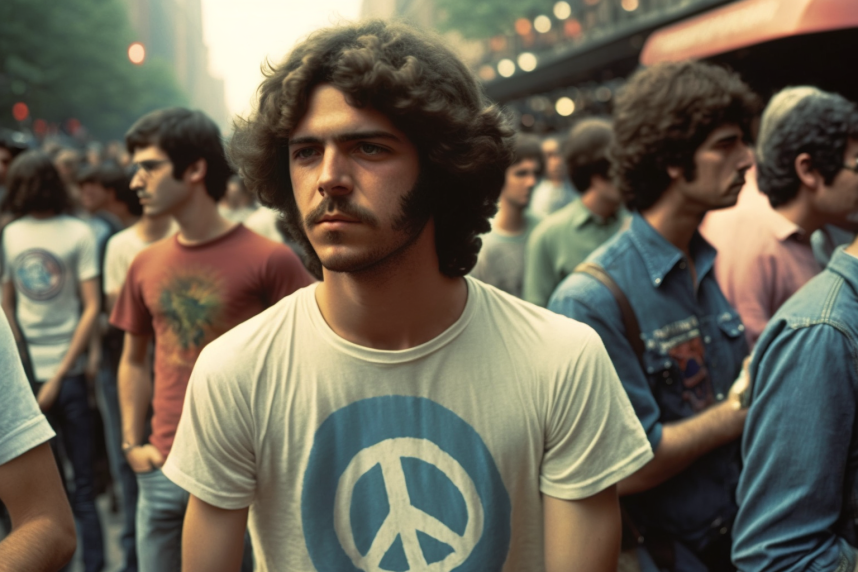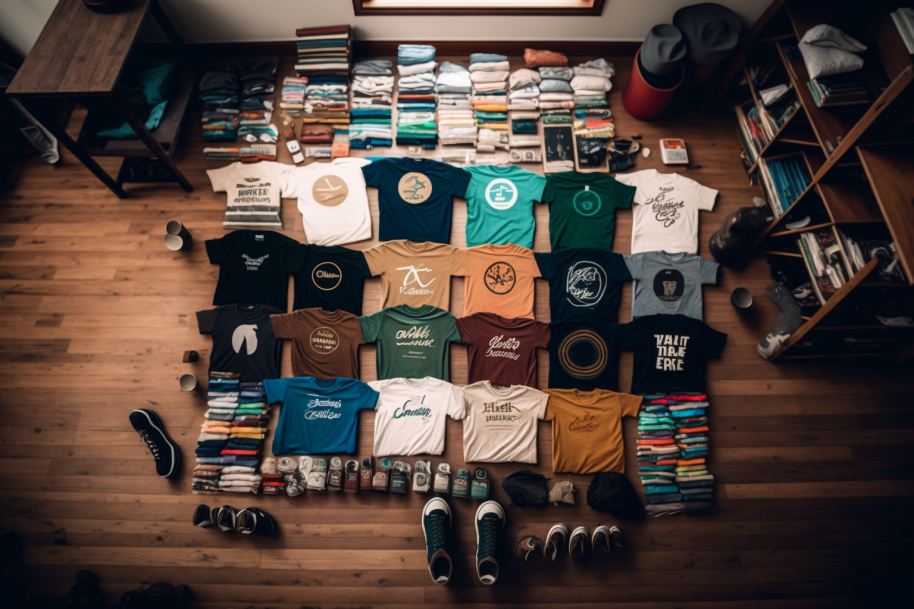La evolución de las playeras: Un recorrido por las tendencias de estilo década a década
Publicado por Alberto Queiroz el
¿Qué hace que una playera sea una playera? Pues fácil: ¡la forma de "T"! De ahí viene, por cierto, el nombre inglés "t-shirt" — camisa en T. Pero más allá de su forma, las playeras también se asocian a un tipo de material (el algodón) y a su ambiente de informalidad. Cómodas y sencillas de hacer, las playeras se fabrican prácticamente en todas partes.
De hecho, hoy en día, las playeras son quizá el elemento más común de la indumentaria en todo el mundo. Pero no siempre fue así — de hecho, la humilde playera lleva entre nosotros poco más de un siglo.
Desde su origen como prenda obrera del siglo XIX hasta las modernas tendencias del siglo XXI, la playera ha recorrido un largo camino en poco tiempo. Veamos cómo ha evolucionado a lo largo de los años.
El nacimiento de las playeras
Lo creas o no, las playeras proceden de una prenda de aspecto muy ridículo (para nuestros estándares modernos) llamada traje sindical. Recomendamos encarecidamente buscar en Google traje sindical alguna vez, porque seguro que te ríes un rato.
A finales del siglo XIX, los trabajadores de las minas y los muelles tenían la costumbre de acortar la parte superior del traje sindical. Porque, en serio, hacía mucho calor para trabajar. Y así nació la primera versión de la playera.
Los tempranos 1900 y ropa militar
Una vez comprobada la eficacia de las prendas ligeras en las minas, los militares no tardaron en descubrirlas. Empezaron a utilizarse en la Marina de los EE.UU. y pronto se convirtieron en una prenda básica en todas las ramas del ejército. Eran una prenda cómoda para llevar bajo el uniforme de los soldados y resultaban ideales para el trabajo de campo en climas cálidos.
Unos años más tarde, la Primera Guerra Mundial extendió aún más la popularidad de las playeras. Las playeras dejaron de ser sólo una prenda interior y empezaron a utilizarse en todo tipo de trabajos manuales, incluida la agricultura. También se convirtieron en una prenda popular para los chicos: baratas, buenas para correr y más fáciles de limpiar que las camisas normales.
En 1920, "playera" se convirtió en una palabra aceptada en la lengua inglesa y tuvo el honor de entrar en el Diccionario Merriam-Webster. Y ahora, ¡ya estamos hablando de playeras!
Años 1930-1950: Las playeras entran en la moda
Los rancheros de la Gran Depresión llevaban playeras a menudo, al igual que los marineros durante la Segunda Guerra Mundial y después, y más o menos por las mismas razones antes mencionadas: eran baratas, cómodas, buenas para el trabajo físico y molaban.

Sin embargo, no fue hasta principios de los años 50 cuando la playera se puso de moda en el otro sentido de la palabra. Y eso, como ya habrás adivinado, hay que agradecérselo a Hollywood. Después de que Marlon Brando la llevara en Un tranvía llamado deseo, la playera tuvo por fin su gran momento. Ahora ya no podía dejar de ser guay. Ahora era una prenda fresca, varonil, atrevida y rebelde, algo que los aspirantes a James Dean y Marlon Brando copiaban con impaciencia.
La playera había alcanzado por fin la mayoría de edad. Ya no se percibía como una prenda interior, sino como algo propio que se podía llevar con orgullo a todas partes.
1960-1980: las playeras como forma de expresión
La década de 1960 trajo consigo dos cosas que cambiaron y popularizaron aún más la playera: los avances en serigrafía y, por supuesto, un gran cambio social a favor de la libertad y la expresión personal.
El primer cambio hizo posible imprimir playeras con todo tipo de textos e imágenes. El segundo hizo que la gente quisiera dar alas a su creatividad y difundir eslóganes — y para ello, la playera fue un medio de expresión favorecido.
Además de ser un vehículo de expresión político-cultural, las playeras no tardaron en canalizarse para la publicidad, ya que grandes empresas como Coca-Cola y Disney empezaron a imprimir playeras con sus logotipos y eslóganes empresariales.
1990-2000: la playera se vuelve internacional
Las playeras habían sido un elemento básico de la cultura del hip-hop y el rap durante algún tiempo, pero la década de 1990 y la difusión del streetwear hicieron que se globalizaran de verdad por primera vez — el estilo relajado y desenfadado de la playera y las zapatillas deportivas era sencillamente demasiado fácil de enamorar.
Si a esto añadimos la creciente popularidad de la ropa deportiva, impulsada por marcas como Nike y las franquicias deportivas estadounidenses, la playera consolida aún más su atractivo mundial.
2010-Presente: La evolución continúa
Desde hace un par de décadas, la gente sigue encontrando formas nuevas y creativas de llevar sus playeras. Nuestra época es la de la personalización fácil, y las playeras estampadas personalizadas muestran ahora nuestro amor por películas y series populares, grupos de música favoritos o marcas de diseño predilectas. La cultura de los memes de Internet también está muy presente y aporta un toque extra de humor a las playeras de todo el mundo.
Las playeras también se han reinventado en distintos materiales — las llamadas "performance t-shirts", populares en diversas actividades atléticas, se han convertido en sus propias tendencias de moda athleisure. La playera sencilla de toda la vida sigue triunfando.
Conclusión
De prenda interior de trabajo de segunda categoría a posiblemente el artículo más popular de la cultura pop, la playera ha recorrido sin duda un largo camino. Y es probable que tenga aún más futuro que pasado — si nos guiamos por las tendencias recientes, es probable que la playera sea un tema clave de exploración para las futuras tendencias de la moda y la personalización. ¿Qué podemos decir? Estamos a favor.
Nadie sabe cuál será el próximo destino de la playera, pero una cosa es segura: no abandonará nuestra cultura a corto plazo.






Comentarios